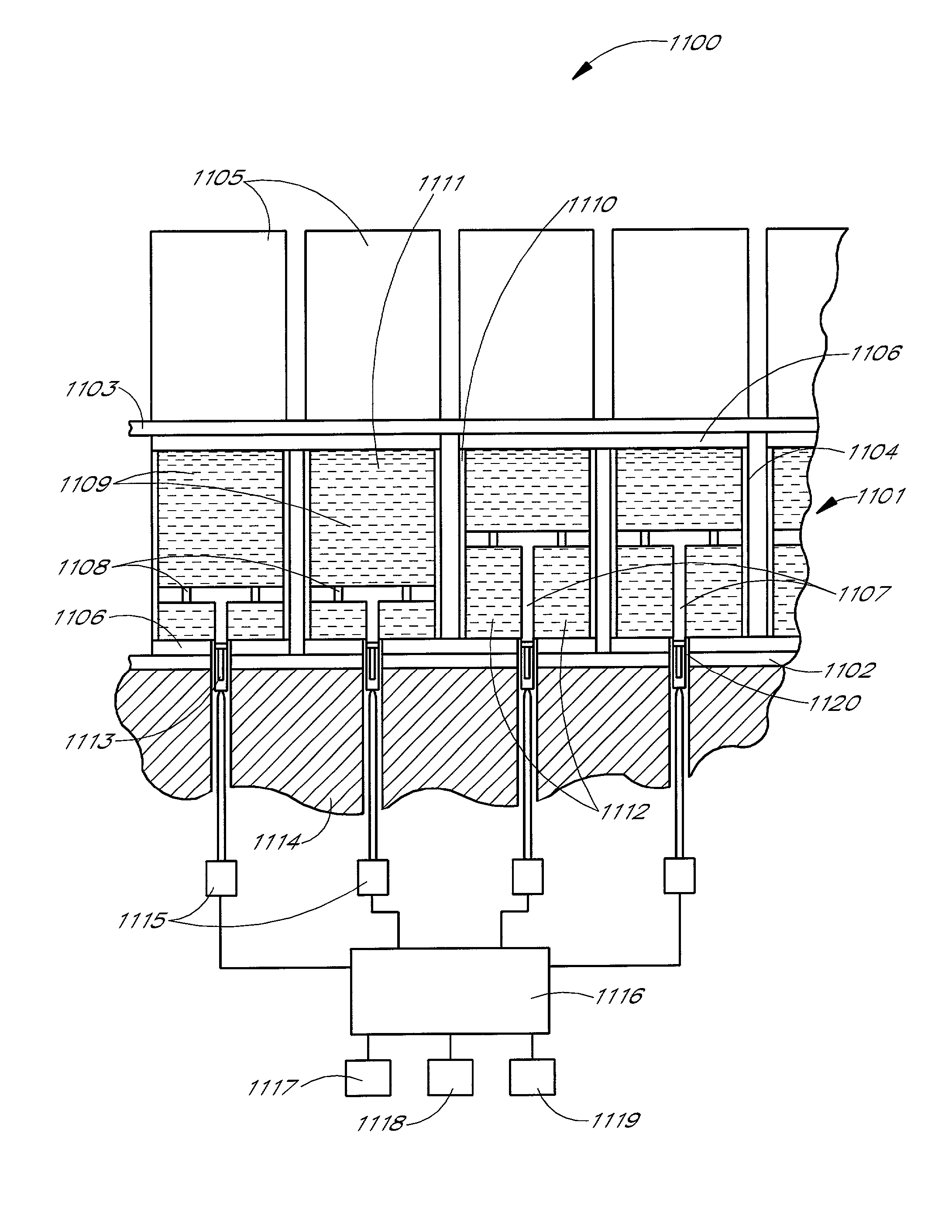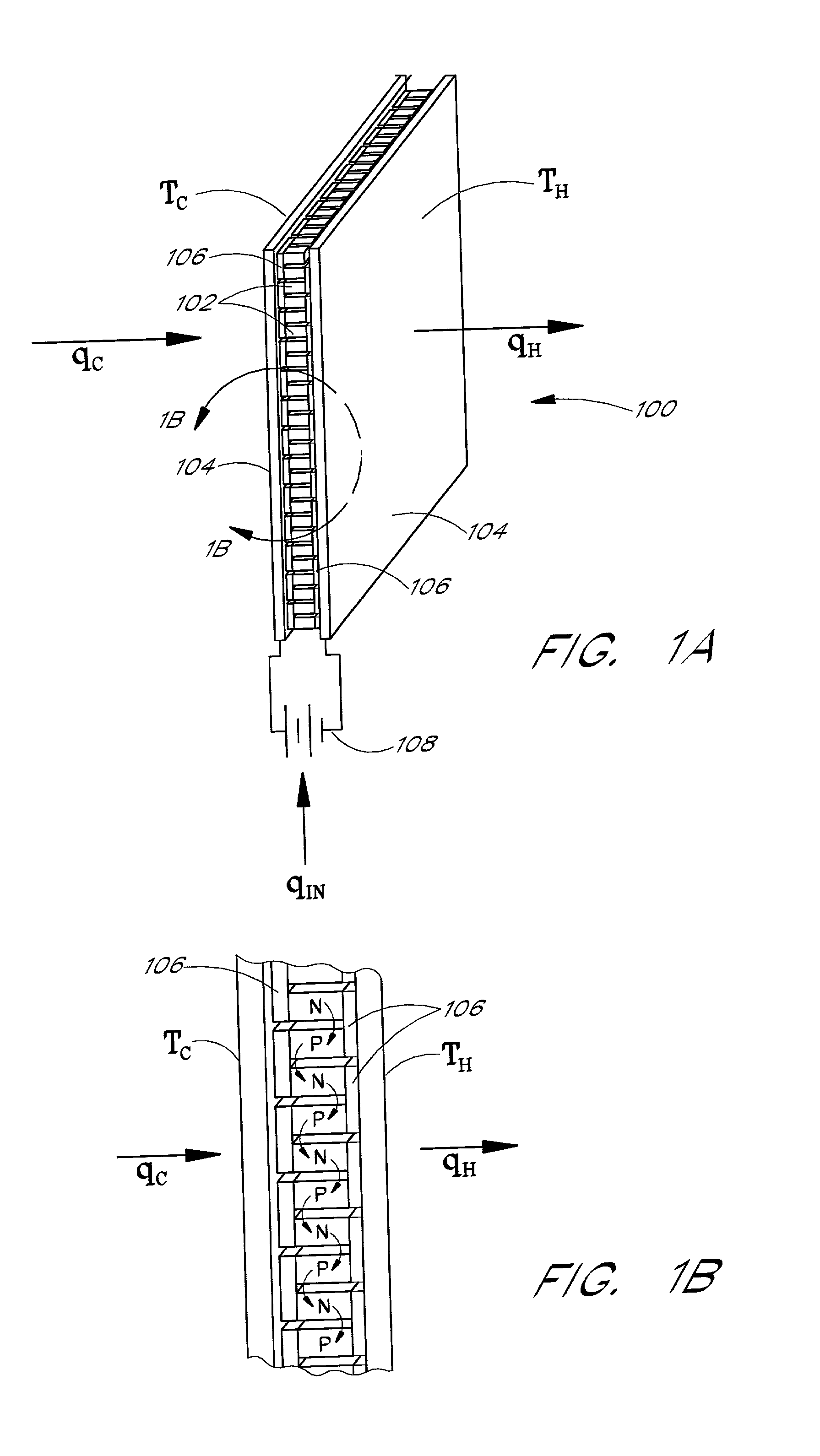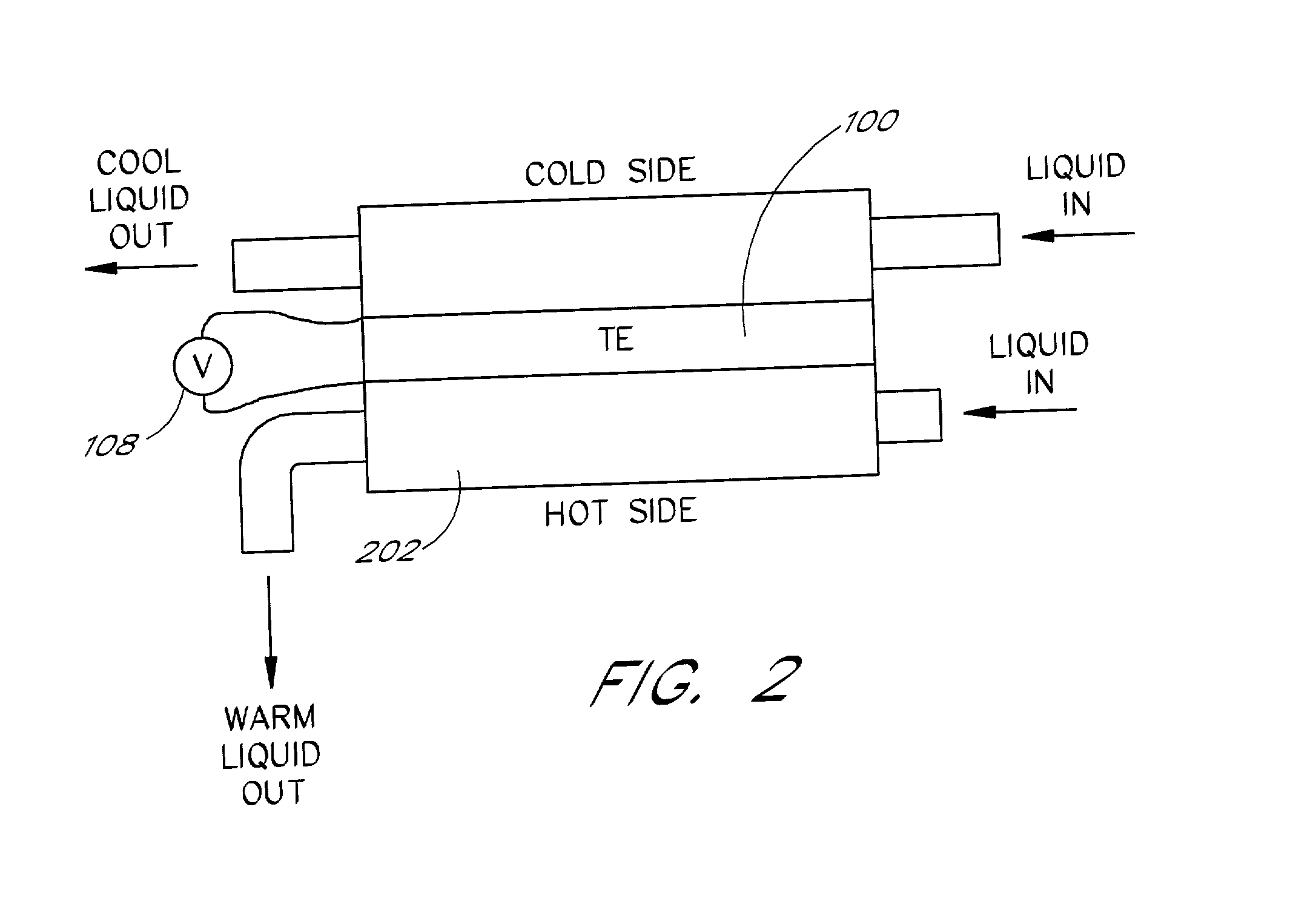Efficiency thermoelectrics utilizing thermal isolation
a technology of thermal isolation and thermoelectrics, applied in the manufacture/treatment of thermoelectric devices, machines/engines, lighting and heating apparatus, etc., can solve the problems of large volume of waste fluid, large fan or pump, and low system efficiency to comp
- Summary
- Abstract
- Description
- Claims
- Application Information
AI Technical Summary
Problems solved by technology
Method used
Image
Examples
Embodiment Construction
is made in conjunction with the following figures.
[0055] FIGS. 1A and 1B depict a conventional thermoelectric device;
[0056] FIG. 2 depicts a conventional thermoelectric device in a conventional fluid heating or cooling application;
[0057] FIG. 3 depicts a conventional thermoelectric element for use in cooling a material or component;
[0058] FIG. 4 depicts an efficiency measure of various thermoelectric materials;
[0059] FIG. 5 illustrates a generalized conditions diagram of conventional thermoelectric devices;
[0060] FIG. 6 illustrates a generalized block diagram of a thermoelectric system;
[0061] FIG. 7A depicts a first embodiment of a thermoelectric system in accordance with the present invention and its accompanying temperature profiles;
[0062] FIGS. 7B and 7C depict a more detailed illustration of the construction of the thermoelectric system of FIG. 7A;
[0063] FIGS. 7D and 7E depict alternative embodiments of the thermoelectric system of FIG. 7A, including additional enhancements acco...
PUM
 Login to View More
Login to View More Abstract
Description
Claims
Application Information
 Login to View More
Login to View More - R&D
- Intellectual Property
- Life Sciences
- Materials
- Tech Scout
- Unparalleled Data Quality
- Higher Quality Content
- 60% Fewer Hallucinations
Browse by: Latest US Patents, China's latest patents, Technical Efficacy Thesaurus, Application Domain, Technology Topic, Popular Technical Reports.
© 2025 PatSnap. All rights reserved.Legal|Privacy policy|Modern Slavery Act Transparency Statement|Sitemap|About US| Contact US: help@patsnap.com



